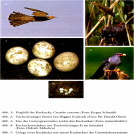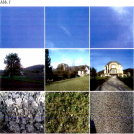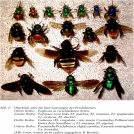Article Search
Von der Symbiose zum sogenannten Brutparasitismus
From symbiosis to brood parasitism Part I: From the life of the cuckoo
Using the cuckoo family as an example, this article shows that likening the cuckoo to a brood parasite is not generally justified, as there are many cuckoo species that care for brood. Some of them - possibly the oldest - form social groups and brood communities… Read More

Verstehen wir das Leben in Entwicklung?
Do we understand life in development?
This contribution discusses the obstacles to understanding the evolution of living nature and the human being. What are these obstacles? Life can show us what true time really is, for which our concept of Newtonian time is inadequate. The way we ordinarily understand our soul and spirit is… Read More

Blut und Nerv am tierischen und menschlichen Auge
The anthroposophical study of man is characterised among other things by the fact that it attempts to overcome the duality of the phenomena of body and soul, and understand the human being as a unity of body, soul and spirit. As an example, Rudolf Steiner repeatedly referred to the human and vertebrate eye in order to illustrate the… Read More

Der Typus zwischen Irrationalität und Rationalität - oder: Das geheime Gesetz des Siebensterns (Trientalis europaea)
The ’typus’ between irrationality and rationality - or: the secret law of chickweed wintergreen (‘star-flower’, Trientalis europaea)
The theory of phyllotaxis, the positions of leaves on plants, describes the reciprocal 'annidation‘ of plant organs and thus the adaptation of the plant organism to itself so to speak. In this respect it… Read More

Vataireopsis amroba
Vataireopsis amroba. A plant for treating skin diseases
The wood of the tropical tree Vataireopsis araroba produces an exudate containing anthranoids (Goa powder, chrysarobin) which was used for topical treatment of psoriasis and other skin diseases. However, today it is larger obsolete and has been replaced by the synthetically… Read More

In die Welt gestellt sein zwischen Oben, Mitte und Unten
Being placed in the world between above, centre and below. A plea for trust in the phenomena
The directions of gaze 'above', 'centre' and 'below' are investigated for their phenomenological content. Photographic documents serve to illustrate. A tabular compilation with a commentary helps to classify and evaluate the phenomena. The… Read More

Beweisen oder Prüfen? Gedanken zur Bildekräfteforschung
Proving or testing? Thoughts concerning research on ‘formative forces’
Awareness of research on so-called 'formative forces' has greatly increased amongst the anthroposophical public. This is evidenced by the number of current articles and books, and above all by the Annual General Meeting of the Anthroposophical Society in Germany,… Read More

Die Dreigliederung in der Arznei-Therapie
Threefolding in medical therapy
The threefolding of the human being, the central basis of anthroposophical medicine, is presented in outline. From its anatomical, physiological and psychological aspects, the pharmaceutical requirements and therapeutic possibilities of medicines developed by Rudolf Steiner are indicated and clarified.… Read More

Betrachtungen zum Todesgeschehen in der Natur. Zugleich ein Vorwort zum nachfolgenden Beitrag von Joseph Crowther Hirst
Fliegende Juwelen Südamerikas
About 235 species of orchid bees (Euglossini) inhabit the rainforests of Central and South America. Of the five identified genera, three are nest building and two are brood parasites. They are distinctive amongst the bees for three unusual features: they have extremely long tongues; many species gleam with iridescent colours and the males of… Read More

